Polacanthidae
Kenneth Carpenter
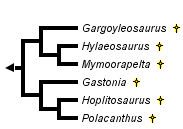


This tree diagram shows the relationships between several groups of organisms.
The root of the current tree connects the organisms featured in this tree to their containing group and the rest of the Tree of Life. The basal branching point in the tree represents the ancestor of the other groups in the tree. This ancestor diversified over time into several descendent subgroups, which are represented as internal nodes and terminal taxa to the right.

You can click on the root to travel down the Tree of Life all the way to the root of all Life, and you can click on the names of descendent subgroups to travel up the Tree of Life all the way to individual species.
For more information on ToL tree formatting, please see Interpreting the Tree or Classification. To learn more about phylogenetic trees, please visit our Phylogenetic Biology pages.
close boxIntroduction
Polacanthids are medium (Gargoyleosaurus 2.5 m) to large (Gastonia 6 m) and occur primarily in the Upper Jurassic and Lower Cretaceous of Europe and North America. Until recently, polacanthids were very poorly known, despite one of them (Hylaeosaurus armatus) being the first ankylosaur named (Mantell, 1832). The recent discovery of Gastonia and Gargoyleosaurus skulls (Carpenter et al., 1998) and associated postcrania reveal polacanthids to have the "skull of an ankylosaurid on the skeleton of a nodosaurid" (Kirkland, 1998) (Fig. 1). Thus, prior to the discovery of the skulls, it was not surprising that polacanthid species were placed in the family Nodosauridae by Coombs (1978) and Coombs and Maryanska (1990). Kirkland (1998) focused on the ankylosaurid features, especially of the skull, which led him to establish the Polacanthinae as a subfamily of the Ankylosauridae. More recently, Carpenter (2001) has elevated the subfamily to family status based on a phyletic analysis of the Ankylosauria.

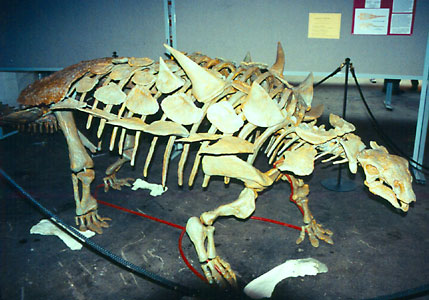
Figure 1: Skeleton of Gastonia, the best known polacanthid from the Early Cretaceous of North America.
Characteristic features of the polacanthids include the absence of a tail club, laterally projecting spines along the neck, laterally projecting thin scutes along the sides of the body, and sacral armor fused into a shield.
Characteristics
Polacanthids are unusual in that they have characters previously thought to be exclusively nodosaurid or ankylosaurid (Kirkland, 1998). For example, the subtriangular skull is almost as wide as long, a character more common with ankylosaurids than nodosaurids (see above). On the other hand, the acromion process is prominent and located near the glenoid as in nodosaurids, although it is a thin flange rather than a knob.

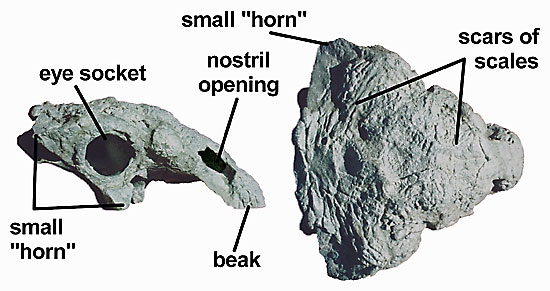
Figure 2: Skull of Gastonia in side (left) and top (right) views. The characteristic features of the skull that may be seen include: skull almost as wide as long and moderately developed jugal and postorbital "horns."
Other characters of polacanthids include large postorbital and jugal "horns" as in ankylosaurids, an inverted U-shaped notch in the anterior part of the premaxilla, and the cheek emargination extends posteriorly onto the jugal. The quadrate is straight and steeply sloped anteroventrally. The rear part of the skull roof overhangs the occiput. At the rear of the skull, the occipital condyle is crescent-shaped and set on a very short neck. The cheek teeth are primitive in that they lack the basal swelling or cingulum of nodosaurids and ankylosaurids. On the lower jaw, the coronoid process is low and rounded.

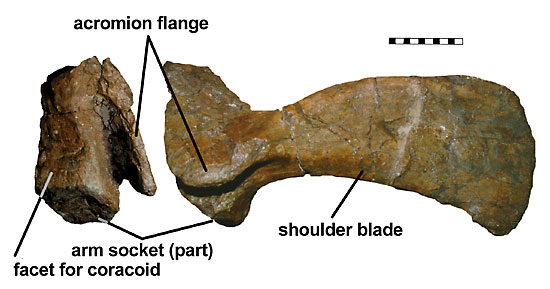
Figure 3: Shoulder girdle of Hylaeosaurus showing the characteristic flange-like acromion of polacanthids.
In the postcranial skeleton, the scapula has a well developed acromion flange that originates from the dorsal margin of the scapula. There are two bands of cervical armor. The lateral shoulder spines are triangular and grooved along their posterior margin, which accommodates the next spine when the neck and body turn. Large, dorsoventrally compressed, asymmetrically hollow-based, triangular spiny plates occur along the sides of the body and tail. In addition, the sacral armor is fused together.


Figure 4: Skeleton of Gargoyleosaurus showing the fused sacral shield and laterally projecting triangular scutes along the sides of the body. The two rows of cervical armor are also seen. The scutes on the back of polacanthids have a distinct alternating pattern.
Discussion of Phylogenetic Relationships
The phyletic analysis by Kirkland (1998) established the subfamily Polacanthinae containing the taxa Gastonia, Polacanthus and Mymoorapelta thus:
Using more data and more taxa, Carpenter (2001) diagnosed the family Polacanthidae, which was first proposed (but not defined) by Wieland (1911, p. 118). The data set included more taxa than used by Kirkland, and the resultant phyletic tree differs considerably.
Paleobiology
Polacanthids are known from the Upper Jurassic of North America and the Lower Cretaceous of Europe. Fragments of possible polacanthids are known from the Middle and Upper Jurassic of Europe (e.g., mandible named Sarcolestes), but these specimens lack any diagnostic characters that differentiate them from other polacanthids. The deposits in which polacanthids occur indicate strongly seasonal or wet environments. Generally, the North American strata producing polacanthids (Morrison and Cedar Mountain Formations) indicate drier climates than the European strata (e.g., Wealden).
Polacanthids have either a narrow muzzle (Gargoyleosaurus) or a broad muzzle (Gastonia), suggesting that some taxa were more selective herbivores than others. The cheek teeth lack the cingulum or swollen base seen in more advanced ankylosaurs (most nodosaurids and ankylosaurids). Nevertheless, some teeth wear is present indicating some processing of food.
Polacanthid armor is remarkably uniform, consisting of thin, hollow-based, flattened, triangular plates along the sides of the body and tail. This armor is supplemented along the back and top of the tail by thin-walled, keeled scutes. Sections of armor preserved in situ (life position) indicate that the armor was arranged in alternating fashion rather than in transverse rows as in nodosaurids and some ankylosaurids. Neck armor consists of two rows of fused keeled plates as in ankylosaurids.
A large, wide based spine found at a bonebed containing numerous individuals of Gastonia is problematic. The spine may have been erect and used for display as shown in the title illustration. Considering how many individuals occur at the site (minimum number = 5), it is surprising that only a single spine has been found. It is possible that only males had such large spines (smaller spines are known at the site) and these were used in display.
References
Carpenter, K. 2001. Phylogenetic Analysis of the Ankylosauria. Pp. 455-483 in K. Carpenter (ed.). The Armored Dinosaurs. Indiana University Press, Bloomington.
Carpenter, K., C. Miles and, K. Cloward. 1998. Skull of a Jurassic ankylosaur (Dinosauria). Nature 393: 782-783.
Coombs, W. 1978. The families of the ornithischian dinosaur order Ankylosauria. Journal of Paleontology, 21:143-170.
Coombs, W., and T. Maryanska. 1990. Ankylosauria. Pp. 456-483 in D. Weishampel, P. Dodson and H. Osmolska (eds.), The Dinosauria. University of California Press, Berkeley.
Kirkland, J.I. 1998. A polacanthine ankylosaur (Ornithischia: Dinosauria) from the Early Cretaceous (Barremian) of Eastern Utah. Pp 271-281 in, S.G. Lucas, J.I. Kirkland and J.W.Estep (eds.), Lower and Middle Cretaceous Terrestrial Ecosystems. New Mexico Museum of Natural History and Science Bul. 14.
Mantell, G. 1832. Memoir on the Hylaeosaurus, a newly discovered fossil reptile from the strata of Tilgate Forest. Geology of the South East of England. London, 415p.
Wieland, G. 1911. Notes on the armored Dinosauria. American Journal of Science 4:112-124.
Title Illustrations

About This Page
Thanks to Katja Schulz, The Tree of Life Project, for her assistance in getting these pages designed and online, and to Brian Franczak for permission to use the image of Gastonia.
All other illustrations are by the author, copyright © 2000 Kenneth Carpenter.

Denver Museum of Natural History, Denver, Colorado, USA
Page copyright © 2000
 Page: Tree of Life
Polacanthidae.
Authored by
Kenneth Carpenter.
The TEXT of this page is licensed under the
Creative Commons Attribution-NonCommercial License - Version 3.0. Note that images and other media
featured on this page are each governed by their own license, and they may or may not be available
for reuse. Click on an image or a media link to access the media data window, which provides the
relevant licensing information. For the general terms and conditions of ToL material reuse and
redistribution, please see the Tree of Life Copyright
Policies.
Page: Tree of Life
Polacanthidae.
Authored by
Kenneth Carpenter.
The TEXT of this page is licensed under the
Creative Commons Attribution-NonCommercial License - Version 3.0. Note that images and other media
featured on this page are each governed by their own license, and they may or may not be available
for reuse. Click on an image or a media link to access the media data window, which provides the
relevant licensing information. For the general terms and conditions of ToL material reuse and
redistribution, please see the Tree of Life Copyright
Policies.
- First online 22 December 2000
- Content changed 10 January 2002
Citing this page:
Carpenter, Kenneth. 2002. Polacanthidae. Version 10 January 2002 (under construction). http://tolweb.org/Polacanthidae/15774/2002.01.10 in The Tree of Life Web Project, http://tolweb.org/




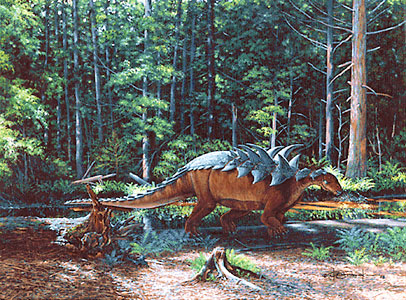

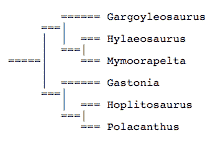
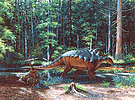

 Go to quick links
Go to quick search
Go to navigation for this section of the ToL site
Go to detailed links for the ToL site
Go to quick links
Go to quick search
Go to navigation for this section of the ToL site
Go to detailed links for the ToL site